Emotions during the first parachute jump and glider flight
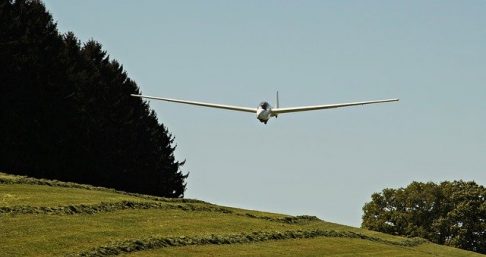

Last modified: 29-03-2020
According to the Solomon’s theory Solomon negative emotions are followed by positive emotions because the nervous system seeks to compensate emotions and reach optimal level. The opposite emotion is formed slowly and lasts longer than its original state.Chart of emotions during the first ever parachute jump should therefore – according to this theory – look like below.
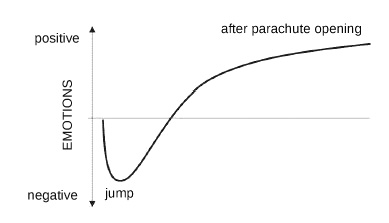
To test this hypothesis, dr. Richard Makarowski from the Institute of Psychology at the University of Gdansk examined 37 people engaged in the first glider flight and 11 people jumping for the first time with a parachute. Subjects filled out a questionnaire on arrival at the airport, in the process of wearing a parachute, before the flight or parachute jump and a few times after landing.
The first part of the questionnaire measured the activation, that is willingness to act. On a scale of -10 to +10 subjects were supposed to indicate their state. +10 meant: I am full of energy, I can move mountains, I want to scream, jump, run; 0 meant: do not want to do anything, and -10: really do not want to do anything, complete lack of energy.
In the second part of the survey respondents marked the value of emotion. + 10 meant: euphoria, great delight, 0: lack of emotion, indifference, and -10: horror, panic, great fear.
In the third part subjects noted which of emotions from: euphoria, joy, happiness, enthusiasm, excitement, satisfaction, curiosity, hope, peace, relief, indifference, fatigue, anxiety, irritability, anger, anxiety / fear, terror, they felt at that moment. They could also enter a different emotion.
The values of activation and emotions of the first ever parachute jump and glider flight are shown in the graphs below:
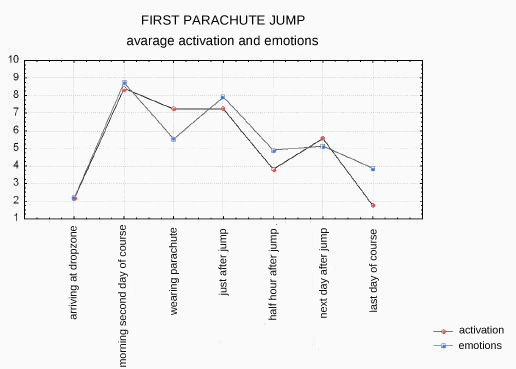
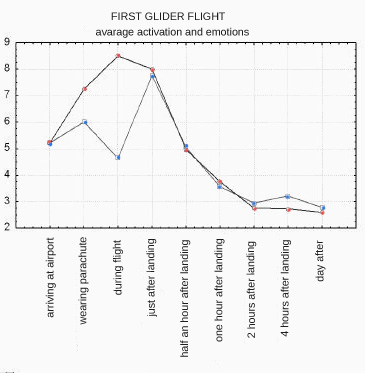
As you can see, in the case of a glider flight, these values are higher in upon arrival at the airport. This is not explained in the work of dr. Makarowskiego, but in my opinion this is due to the fact that people who were first to fly a glider (it was the flight with an instructor, a winch) does not have to pass the two-day course, which was needed before an independent parachute jump, so they knew that awaits them only a short time waiting for your flight. In the case of parachuting, these values are, however, higher on the second day after the jump, which I think clearly demonstrates that it is better to jump with a parachute, than to fly a glider, because after the first positive emotions will remain for a long time ;) Persons performing glider flight were also tested during the flight (conversation with an instructor), which was impossible in the case of persons jumping with a parachute. Recorded conversations showed that during flight people feel both positive and negative emotions: fear, terror, but also happiness. The third part of the survey showed the same before the first glider flight or parachute jump.
Solomon opposing emotions theory thus not confirmed nor in the case of people jumping with a parachute, nor in the case of flying a glider. During extreme activities emotions do not turn a simple way from negative to positive, but occur at the same time.
Reference
dr Ryszard Makarowski “Jakie emocje występują podczas pierwszego w życiu lotu szybowcem oraz pierwszego w życiu skoku ze spadochronem?”, Medycyna Sportowa nr 23/2007
Author: Maja Kochanowska


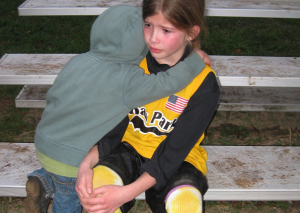



Add comment